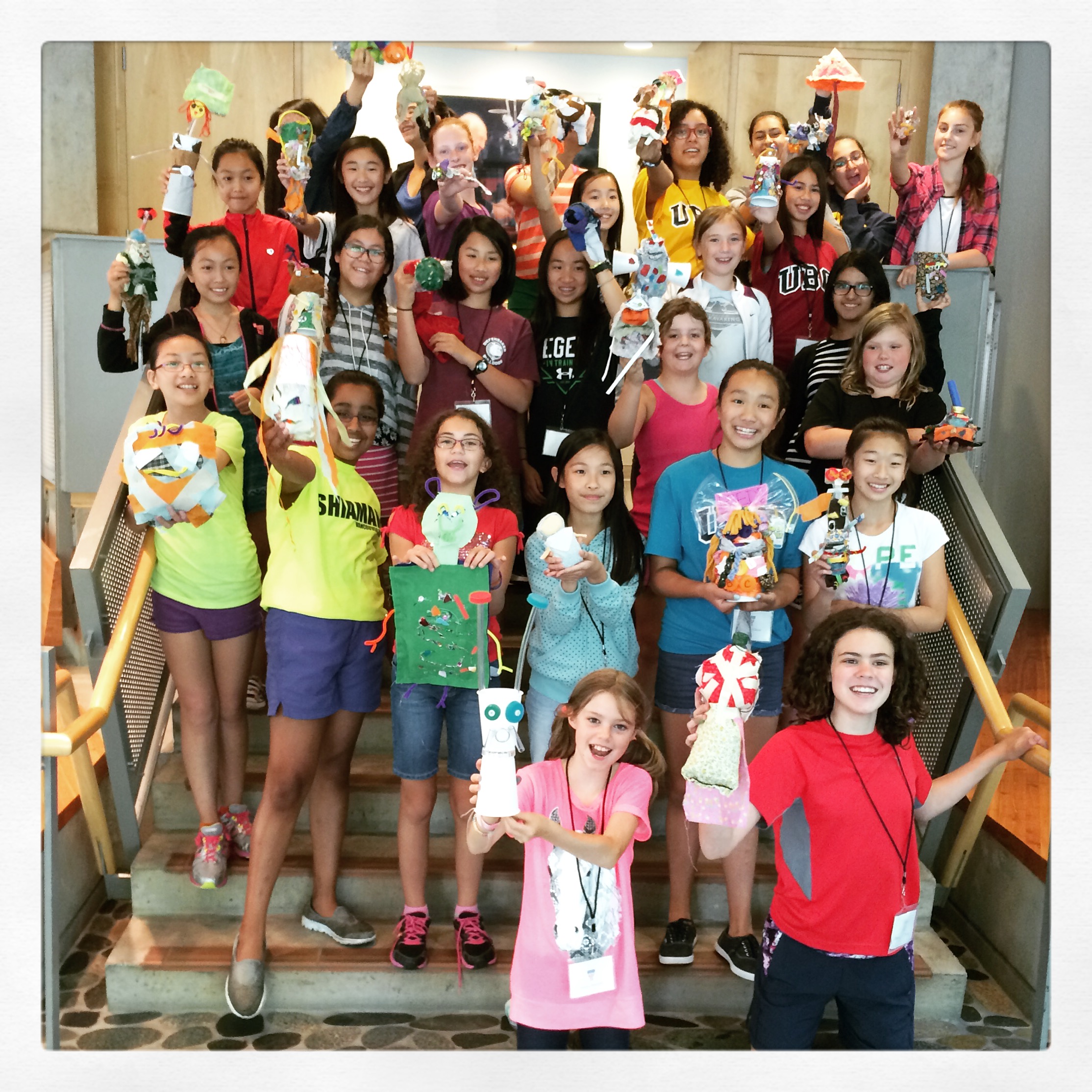The 2015 Vancouver Mini Maker Faire was the first one I didn’t attend, as a visitor or a Maker, since the event started in 2011. I considered cutting our road trip a week short so I’d be home for it, but then decided that would be the wrong decision. No regrets.
But imagine my glee when I got an email on the road from my friend Dave, who’s a prof at UBC and was organizing the second annual Maker Camp for tweens (this year’s was only open to girls aged 11-13), asking if I’d like to lead an afternoon session. He’d asked me to participate at camp last year, too, but I couldn’t due to a scheduling conflict.
So there I was on the road, trying to reply to his email while wrangling very spotty cell service. I’m so glad we were able to work it out!
I learned some things doing Mighty Ugly with a couple dozen tweens, much of it related to my usual refusal to do this workshop with anyone younger than the age of majority.
A Mighty Ugly workshop consists of three acts:
- Act I: Introduction and (usually) awkward discussion.
- Act II: Making an ugly creature.
- Act III: Show & tell, and (usually) spirited discussion.
Adults take a while to warm up to the idea of exploring ugliness and failure and doubt, which is why the introductory conversation is usually short. I find that forcing conversation at the beginning of a Mighty Ugly workshop achieves pretty much nothing. So then we move on to the making. This is where things change. It’s kind of like magic. A few people dive in with gusto while a few others sit in quiet terror, and the rest start to slowly gather supplies. Over time, from what started out as a quiet gathering of uncomfortable people emerges a low hum, and sometimes a great cacophony, of chit-chat and mumbling. Eventually, the terrified people get moving. By the time the making is wrapping up and the first people are ready to introduce their creatures and discuss their experience, most people are willing, if not eager, to talk. Not all people. But most.
What I learned at Maker Camp is that my assumptions about children are true. Or, in scientific parlance more appropriate to having led this workshop in a bio-sciences lab, my hypothesis was supported.
The kids wanted to talk and talk and talk at the beginning of the workshop. They wanted to tell me about things they’d already made at camp, and meals at home that had become total gross disasters, and Lego gone awry. Eventually, I had to put my hands up and tell them about the making. At which point, the place became the happiest mess I’ve seen in a long time. No hesitation. No terror. Just a mess of making.
At the end of the making, a few kids wanted to talk about their creatures, but many didn’t. And there was very little cross-room discussion. No one seemed particularly interested in connecting their experience of making ugly things to their experience of the frustration or shame or sadness of failing at their usual projects at home or at school. No one found the activity to be particularly challenging. And that was that. Totally not what I expect, and routinely experience, from a roomful of adults.
It was such a fun afternoon, and I though I will continue to offer these workshops only for adults, I’ll also continue to make an exception for Maker Camp. I learned a lot about this age group that I’ll use to adjust the workshop for next summer, for sure.
Check out the Maker Camp @ UBC blog for more awesome photos of the session!
​If you’d like to schedule a Mighty Ugly Workshop (for adults), get in touch!
It makes for a great professional-development session addressing team-building, problem-solving, and general creative practice.

